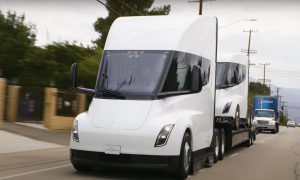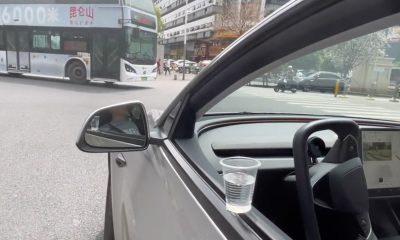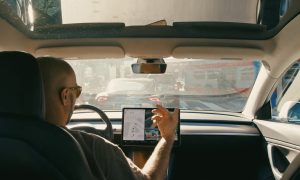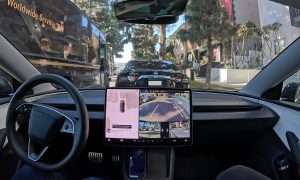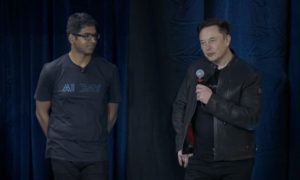News
Self-driving Teslas and autonomous vehicles will end traffic as we know it
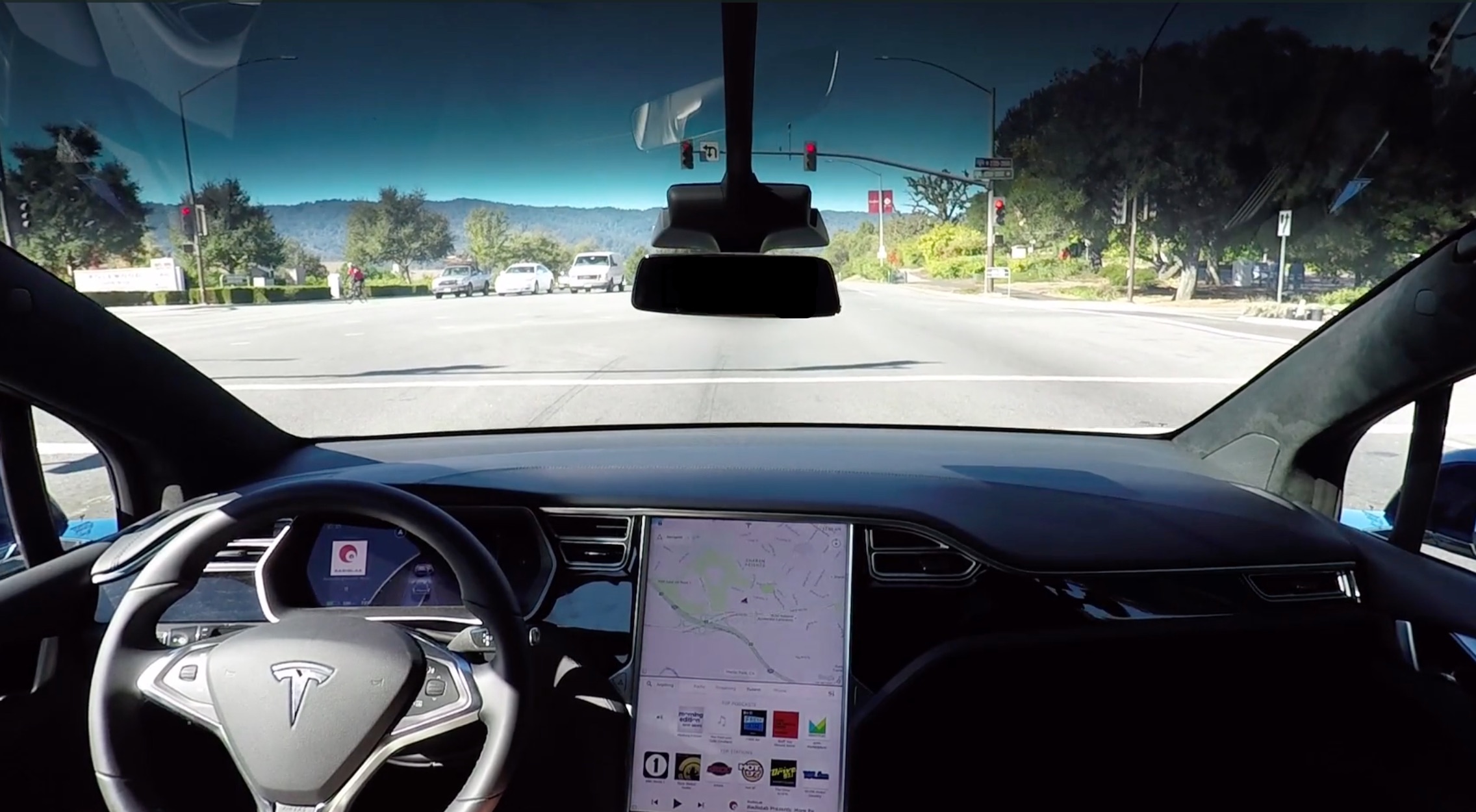
We are all fascinated with autonomous driving in terms of what it can do for us. Make the elderly mobile again without endangering the rest of us with their arguably reduced reaction times, less acute hearing and vision. We dream of the day when we can sleep through a long, boring trip. Doing valuable work in what would otherwise be dead time is a plus too. One thing we haven’t talked about too much is how autonomous cars can radically reduce the congestion of our roads.
Six Inches of Separation (With All Due Respect to Kevin Bacon)
One way we can reduce highway congestion is to reduce the following distances between cars. It takes a human about four seconds to react to a car stopping ahead of us. At 60 mph, that translates to 88 feet per second or a total traveled of 352 feet before you are really starting to stop the car. Using the 2 1/2 second rule would yield 220 feet. Now if you have a car which reacts in, oh say, 1,000 nanoseconds, or a millionth of a second, some have argued that a six inch separation would be more than enough time for the computer to stop the car in time to avoid a collision. So, a non-autonomous car would take up about 220 feet of roadway per car, autonomous cars would take up roughly 20 feet per car. 220 divided by 20 yields about 11 cars per 220 feet of roadway rather than one. You’ve magically increased the carrying capacity which decreases congestion.
Platooning
This increased use of autonomy will almost certainly create “platooning” on our roads where cars headed in the same direction are pulled up within inches of the car ahead creating a “car train” of 30, 50, or more cars all traveling at high speed to a destination ahead of them. With level 5 autonomy, some have suggested that 90 mph is reasonable while remaining very safe.
So let’s do a mind experiment here. You have a 220 foot stretch of roadway which can now safely carry 1 car traveling at 60 mph. Let’s put in a platoon of 11 cars traveling at 90 mph. That 220 foot stretch of roadway at 90 mph can carry 15 cars rather than 11 because 90 is 150% of 60. You have now increased the carrying capacity of the roadway by 1500%, or put another way, it would be like the New York State Thruway had 1/15 the cars on it that it does now. Rush hour would be like driving at three in the morning.
You may say that 220 feet is a preposterous amount of road and that people routinely travel only 10 to 20 feet behind the car in front of them. My response is look at the accident statistics. Yeah, you can travel that close. You just can’t travel that close safely.
Goose it Man!
One of the arguments against high speed travel in cars has been that as you increase speed, miles per kilowatt drop radically. Wind resistance is the big thief of range. When you read about people who manage to get ridiculous miles per charge out of their Teslas you can bet that last dollar that they are driving slowly!
Here’s where we can take a lesson from NASCAR and…wait for it, GEESE! Any fan of NASCAR knows that the drivers “draft” the car in front of them to save gas. The reason is very simple. The car in front is pushing the air out of the way, and the car behind benefits from traveling at the same speed in a partial vacuum, enabling the following driver to save fuel and possibly avoid a pit stop.
Why am I talking about geese? Ever wonder why geese travel in that cool V-formation? Similar reason. They avoid the turbulence from the goose ahead and conserve energy. Being cooperative sorts they trade places with the leader, who drops back and lets the next goose in line take over the toughest place, which is the lead. That way all the geese get to where they’re going quicker and with less fatigue. In our terms, with less battery energy expended.
I foresee platooning supplemented with leader “dropback” like the geese, let’s say, every five miles, to enable very fast driving times with lower fuel/kilowatt hour consumption. This will become part of the autonomous software suite.
So, all hail the goose, and I, for one, look forward to autonomous driving because of the effect platooning will have on our drives, and the automatic increase of the carrying capacity of our roads. Cool, very cool!
Allan Honeyman
(Submitted via email to the Teslarati Network. Do you a post you’d like to share? Email it to us at info@teslarati.com)
Elon Musk
Tesla preps for a Cybercab takeover of the Robotaxi platform after pilot program
Tesla looks to be preparing the Cybercab for Robotaxi operation as castings pile up at Gigafactory Texas.
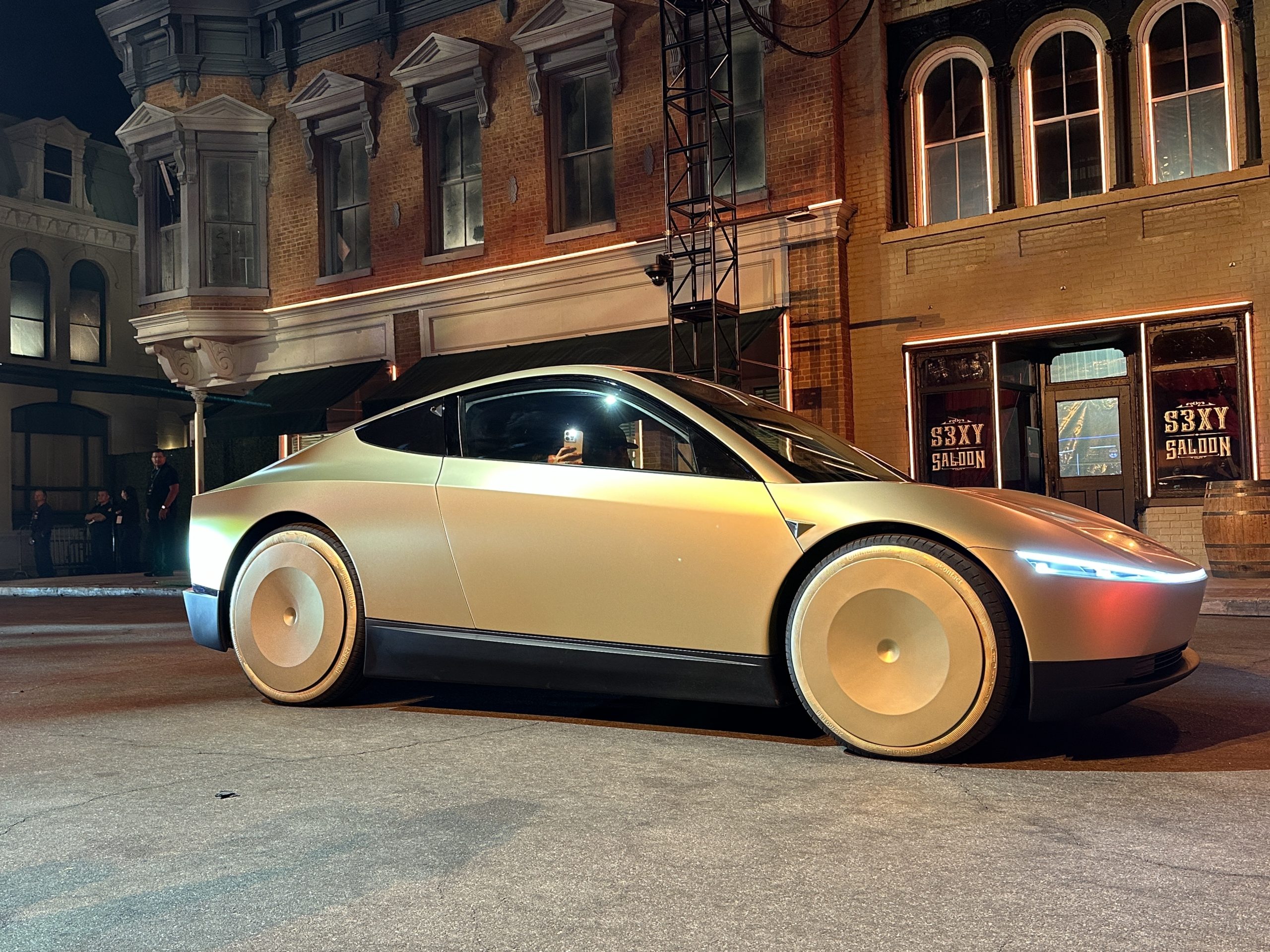
Tesla is evidently preparing for the Cybercab to take over the Robotaxi platform after the pilot program in Austin, Texas, is launched.
That claim is made based on new drone footage from Gigafactory Texas captured by Joe Tegtmeyer, who found hundreds of Cybercab castings that have accumulated on property in Austin.
🚨 The Drone GOAT @JoeTegtmeyer has captured images of “several hundred” Cybercab castings outside of Giga Texas
The Model Y will handle the initial Robotaxi pilot program in Austin, but it looks like Cybercab could be introduced later this year as well! https://t.co/PkPXjuR5Tc pic.twitter.com/iSohkSZcIZ
— TESLARATI (@Teslarati) April 30, 2025
The Cybercab is Tesla’s dedicated Robotaxi vehicle that was unveiled last October. It features just two seats and is minimalistic, aimed toward allowing the Full Self-Driving suite to chauffeur passengers from Point A to Point B without ever having to deal with human interaction or any responsibilities within the vehicle.
In June, Tesla plans to launch its first Robotaxi rides in Texas. Although employees in Austin and in the Bay Area of San Francisco have already had access to over 1,500 trips and 15,000 miles of autonomous (but supervised) travel, Tesla plans to launch a driverless version in a limited fashion in June.
However, this initial pilot program, while presumably operating on an Unsupervised version of the FSD, will only utilize Model Ys, at least at first.
The drone footage captured by Tegtmeyer today seems to tell a story of a quick transition to the Cybercab for the Robotaxi responsibilities, especially as Tesla gets its feet wet with the early Unsupervised FSD rides and gains confidence in the fleet’s ability to navigate passengers:
Many more @Tesla Cybercab Castings at Giga Texas today! Looks like around 75 or so in the racks waiting for production line testing (or more than that?) 😎 pic.twitter.com/0zUdH6BKLx
— Joe Tegtmeyer 🚀 🤠🛸😎 (@JoeTegtmeyer) April 30, 2025
It appears that between 400 and 500 Cybercab castings can be seen in the images Joe captured, a very respectable number considering the company said it will not launch the Robotaxi with the initial rides it gives in Austin.
The images seem to paint a picture that Tesla is truly ready to get things moving in terms of the Cybercab project. While it does not plan to use the vehicle initially, its manufacturing efforts for the car are being prepared by stacking these castings so they’re ready to be expanded upon into the real thing.
On the most recent Earnings Call, Tesla’s VP of Vehicle Engineering, Lars Moravy, said the Cybercab’s engineering has progressed over the last several months to “derisk things like corrosion, the ceiling across the seams of the vehicle, and when you marry several components,” and even things like early crash testing have already taken place.
Moravy continued, “As with all that combined, we kind of go into the builds that we have in this quarter for the Cybercab product, and that’s the next real big test of full-scale integration with the unboxed process. And that’s kind of where we are. So you’ll see them on the test roads in a couple of months.”
Lifestyle
Tesla Semi futuristic sci-fi acceleration sound will never get old
Videos that capture the Semi moving at speed are most notable due to their sheer cool factor.
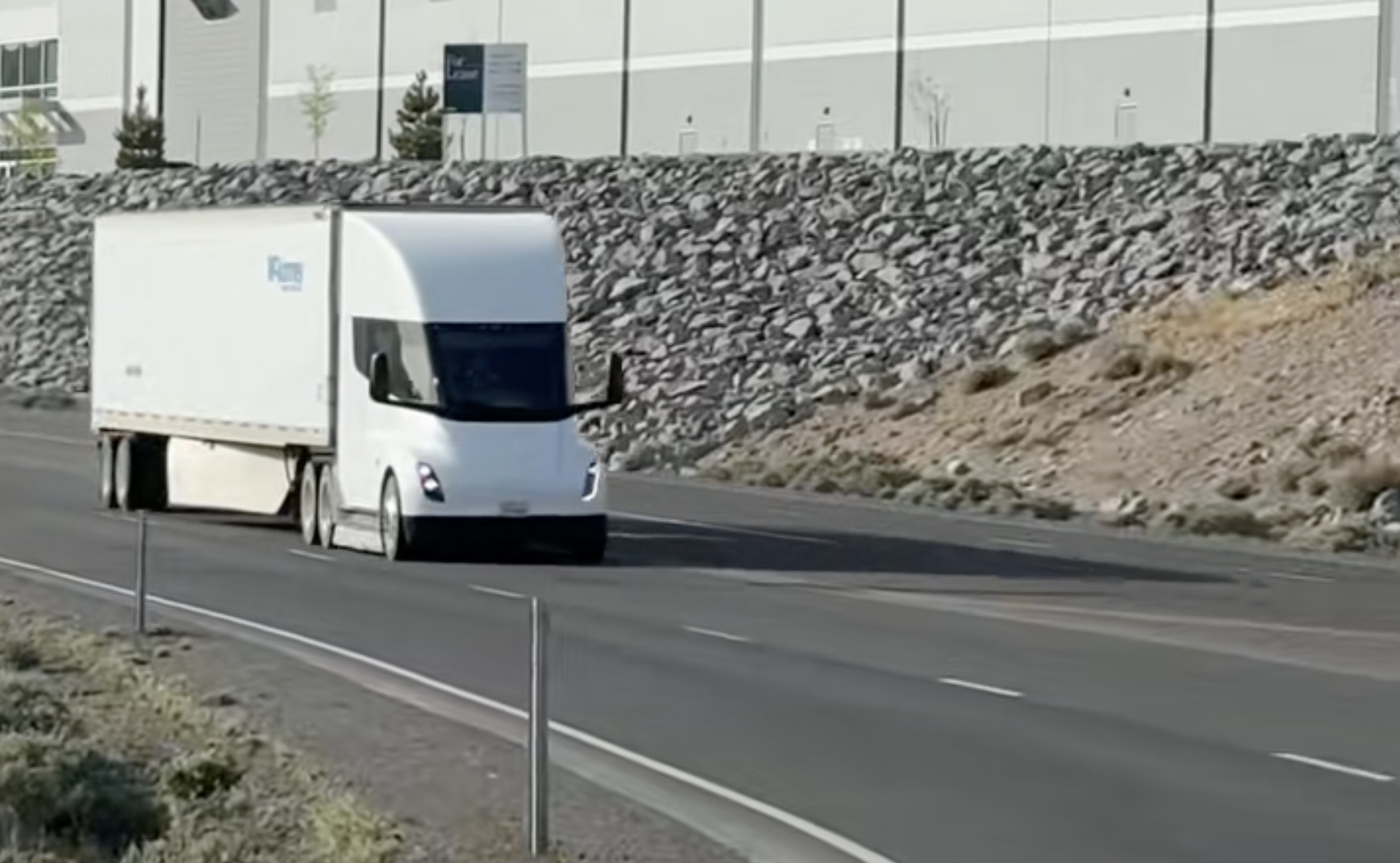
The Tesla Semi is not yet in mass production, but the company has accumulated over 7.9 million miles across its test fleet. With Tesla using the Semi for its operations, it is no surprise that sightings of the Class 8 all-electric truck have been abounding.
These sightings from Tesla enthusiasts vary, but those that capture the the Class 8 all-electric truck moving at speed are most notable, possibly due to their sheer cool factor.
Tesla Semi’s Roar
There is something that just stands out with the Semi, particularly on the road. While the Semi does not have the Cybertruck’s brutalist, angular design, it is still very striking because it’s such a massive machine that moves far too quietly for its size. This is, of course, one of the reasons why the vehicle also becomes extra noteworthy when it fires up its electric motors and accelerates.
Take this video from Tesla Owners Silicon Valley, for example, which shows the all-electric hauler accelerating while pulling what appears to be a full load. In these situations, the Tesla Semi actually becomes audible, but unlike traditional diesel-powered truck, the Class 8 all-electric truck “roars” with its own, unique futuristic, sci-fi sound. In such situations, one could feel the Semi’s raw power, which comes from its three independent motors on its rear axles.
Tesla Semi Ramp
Tesla has been promoting the Semi quite a bit as of late, and recent reports have suggested that the company is putting in a lot of effort to prepare the vehicle for its production in Nevada. Tesla’s Careers website has gone live with over 80 Semi-related job openings recently as well, and a recent report has suggested that Tesla has ramped the Semi’s factory workers in Nevada to over 1,000 employees.
The company has even shared an update video of the Semi factory’s progress near Giga Nevada, as well as the design of the vehicle’s new logo. The Semi’s updated logo is quite interesting as it features elements from the Tesla Model 3’s first logo, which was unveiled way back in 2016.
News
Robots like Tesla Optimus are a $5 trillion opportunity: analyst
This massive opportunity could be tapped by Tesla, thanks to its Optimus humanoid robot.
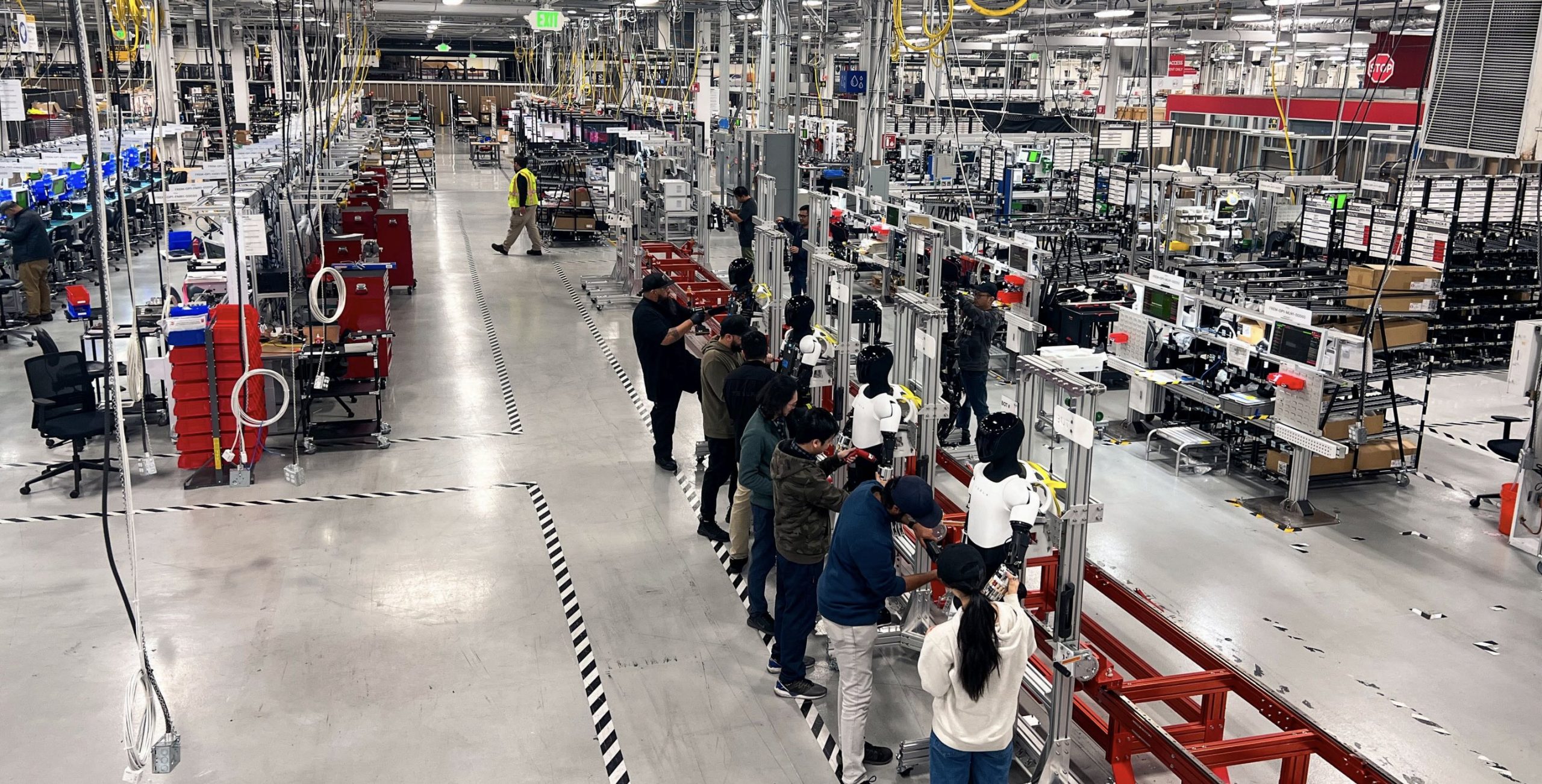
Morgan Stanley analysts have estimated that the humanoid robot market could offer a $5 trillion opportunity by the middle of the century. This massive opportunity could be tapped by Tesla, thanks to its Optimus humanoid robot.
The analysts, however, noted that the humanoid robots will likely be mostly used in industrial and commercial deployments.
The Estimates
Estimates from Morgan Stanley analysts point to humanoid robots hitting $5 trillion in global revenue by 2050. This, the analysts noted, would be about double the total revenue of the 20 largest automakers in 2024. In 2050, Morgan Stanley analysts estimated that there might be about 1 billion humanoid robots deployed.
As noted in a report from Investing.com, the shift to humanoid robots would be gradual. By 2035, the analysts estimated that just about 13 million humanoid robots will be in use, most of which will be used in industrial and commercial settings. Even in 2050, when the analysts estimated that 1 billion humanoid robots will be in use, an estimated 90% might still be used in industrial and commercial settings.
The advent of humanoid robots will likely be felt in the labor sector, Morgan Stanley analysts noted. By 2030, the analysts noted that humanoid robots could replace about 40,000 jobs. Just ten years later, in 2040, the number of jobs that robots could take over could balloon to 8.4 million. By 2050, the analysts noted that 62.7 million humans may end up watching humanoid robots do their jobs.
Tesla Potential
Morgan Stanley noted that companies like Tesla, which control the “brains, bodies, branding and ecosystems” of the humanoid robots, would be able to offer the highest value. This is good news for Tesla’s Optimus program, as it is a product that is designed to be produced at an extreme scale. During the Q1 2025 All Hands meeting, Elon Musk reiterated the idea that Optimus could very well become the biggest product of all time.
Most importantly, Musk also stated that Tesla is internally aiming to acquire enough resources to produce 10,000 to 12,000 Optimus robots this year. But even if Tesla just manages half of this number, or about 5,000 Optimus robots this year, it would already be impressive.
“Even 5,000 robots, that’s the size of a Roman legion, FYI, which is like a little scary thought. Like a whole legion of robots, I’ll be like ‘whoa.’ But I think we will literally build a legion, at least one legion of robots this year, and then probably 10 legions next year. I think it’s kind of a cool unit, you know? Units of legion. So probably 50,000-ish next year,” Musk stated.
-

 News1 week ago
News1 week agoTesla’s Hollywood Diner is finally getting close to opening
-

 Elon Musk2 weeks ago
Elon Musk2 weeks agoTesla doubles down on Robotaxi launch date, putting a big bet on its timeline
-

 News5 days ago
News5 days agoTesla is trying to make a statement with its Q2 delivery numbers
-

 News2 weeks ago
News2 weeks agoTesla’s top investor questions ahead of the Q1 2025 earnings call
-

 Investor's Corner1 week ago
Investor's Corner1 week agoLIVE BLOG: Tesla (TSLA) Q1 2025 Company Update and earnings call
-
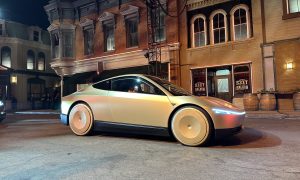
 Elon Musk2 weeks ago
Elon Musk2 weeks agoTesla reportedly suspended Cybercab and Semi parts order amid tariff war: Reuters
-
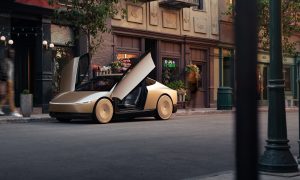
 Elon Musk2 weeks ago
Elon Musk2 weeks agoElon Musk continues to push optimistic goal for Tesla Full Self-Driving
-
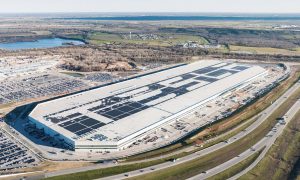
 News2 weeks ago
News2 weeks agoThese ex-Tesla supply chain managers started an AI inventory firm


